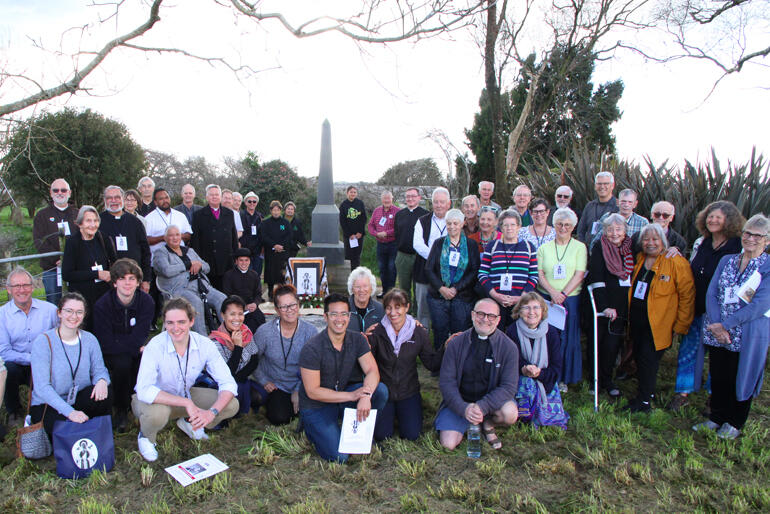
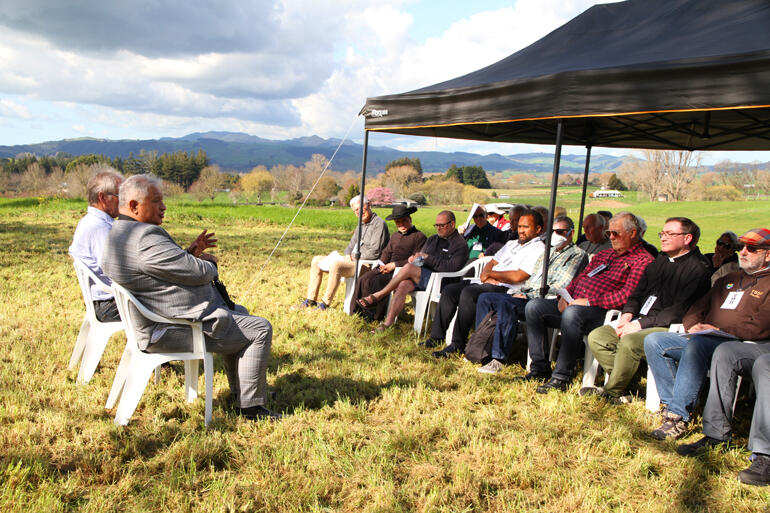
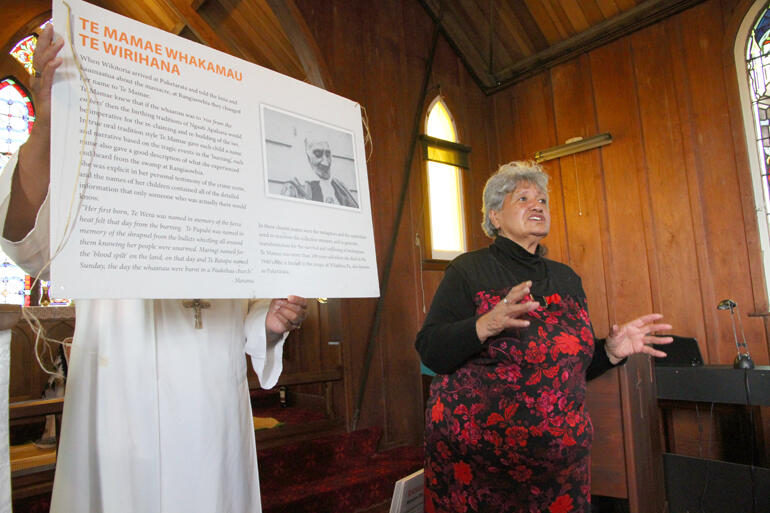
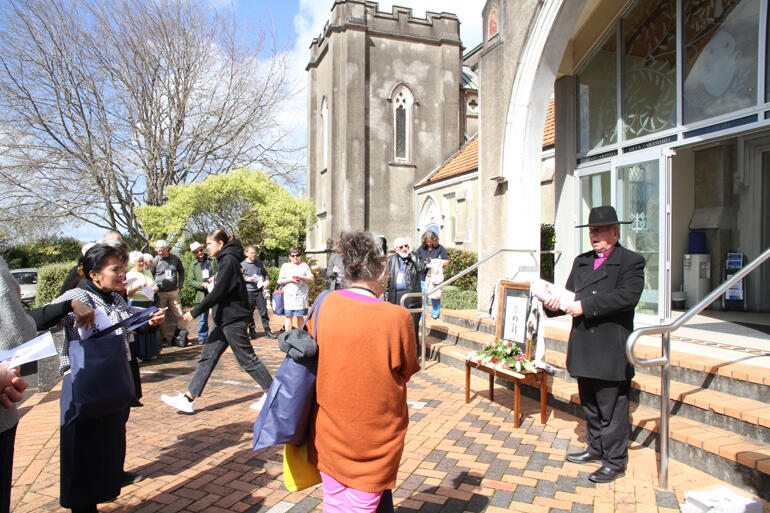
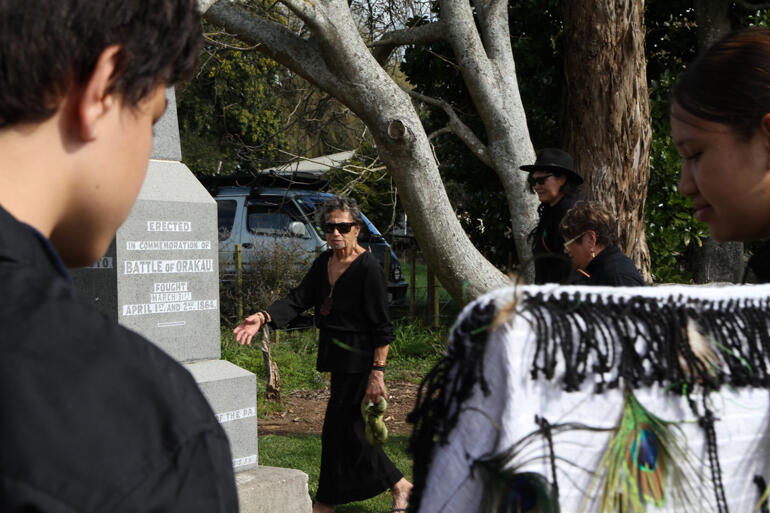
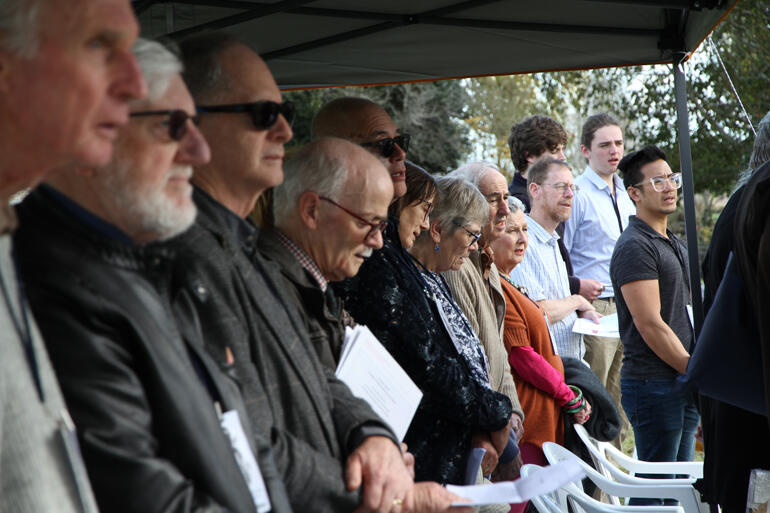
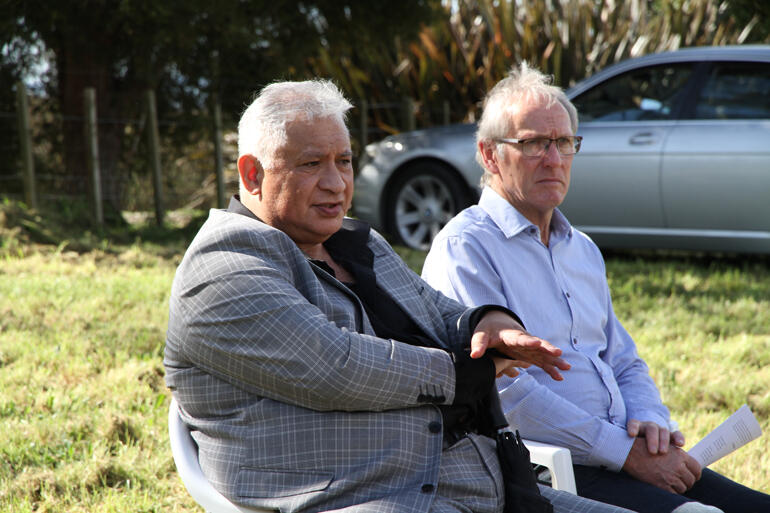
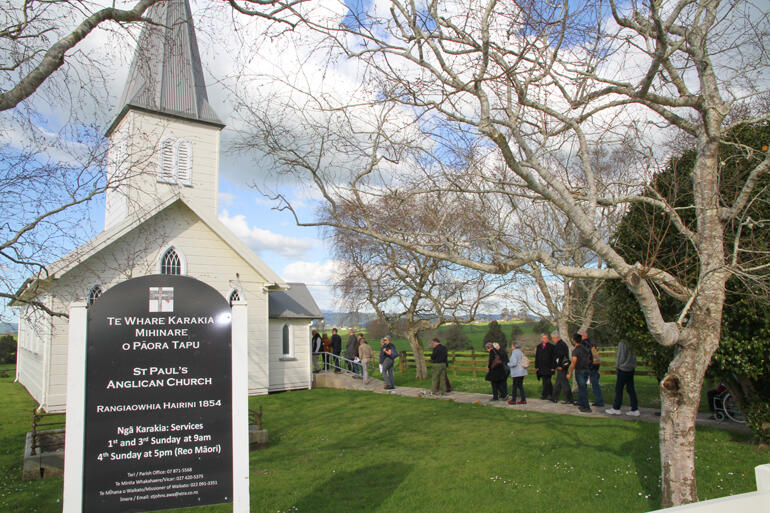
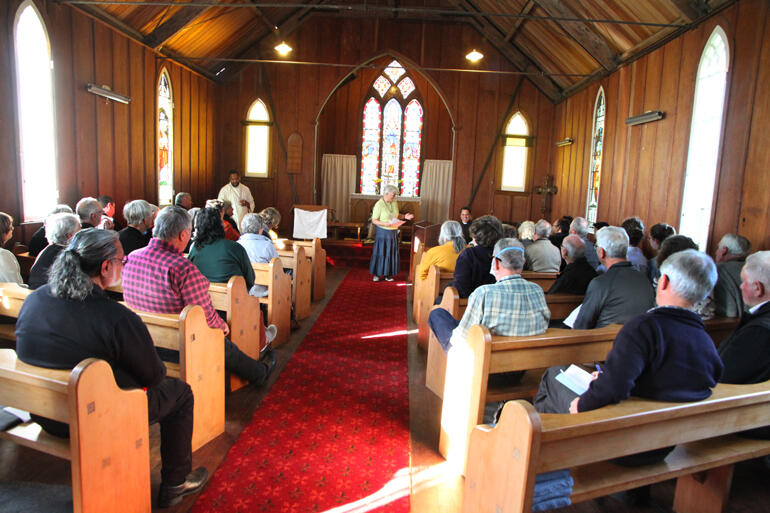
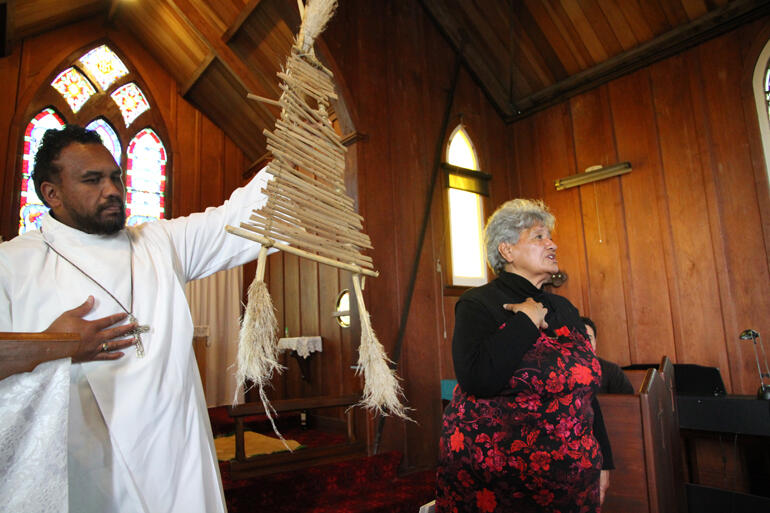
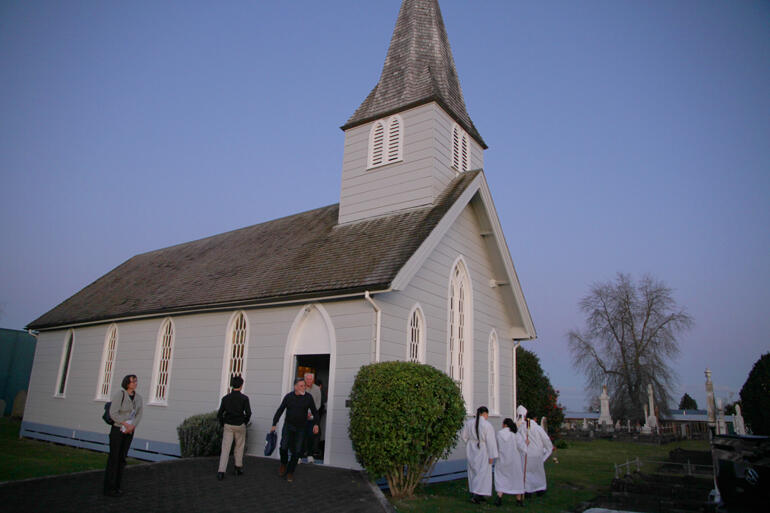
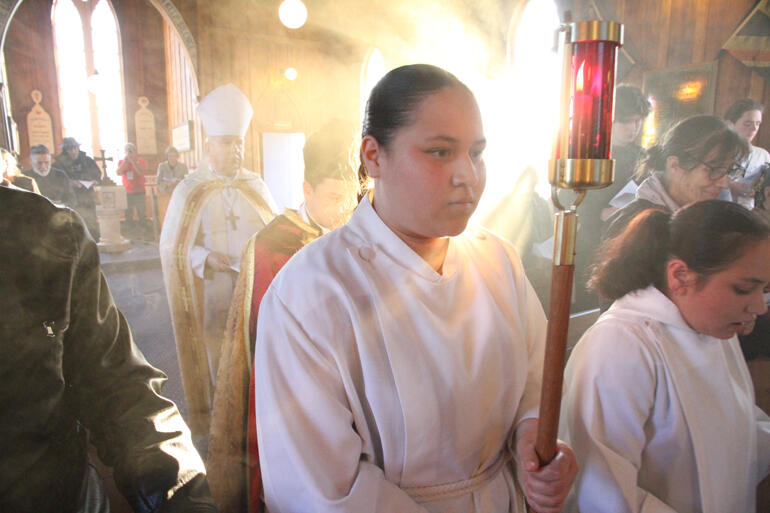
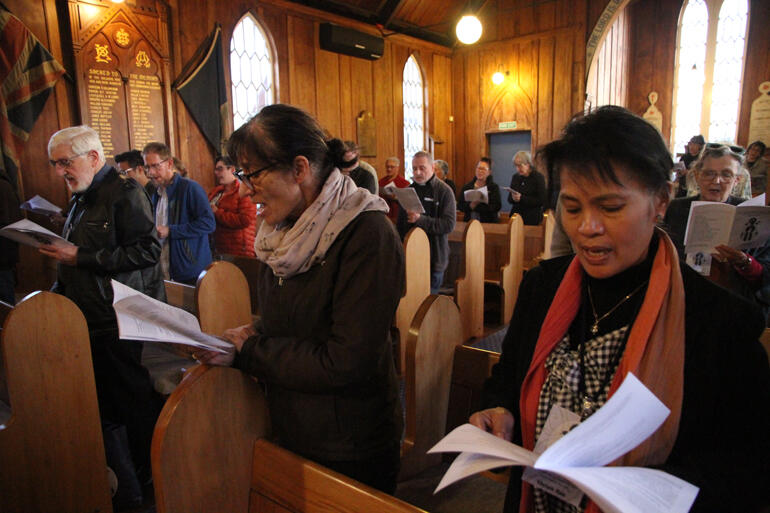
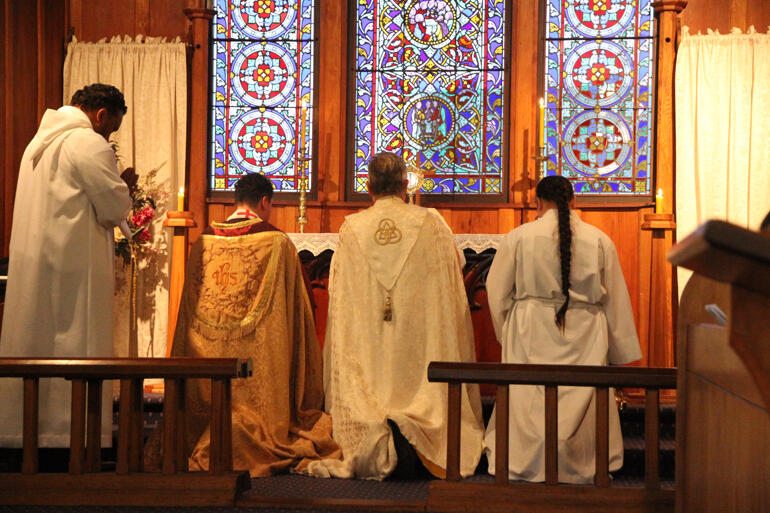
Anglo-Catholics from around Aotearoa New Zealand took part in a moving and challenging pilgrimage with Mary at the heart of this year’s Waikato-hosted Anglo-Catholic Hui, which ran 7-9 September.
Led by Archbishop David Moxon and Pa Cruz Karauti-Fox, and resourced by mana whenua historians, the hīkoi formed the core of the Anglo-Catholic Hui 2023 hosted by members of the Diocese of Waikato and Taranaki and Te Hui Amorangi o Te Manawa o Te Wheke.
This year’s pilgrimage is the first time the hui has entered into a bicultural journey of understanding shaped by Anglo-Catholic spirituality.
On Friday 8 September hui members travelled by bus to sites of the Battle of Oraakau, Rangiaowhia (the Ngāti Apakura and Ngāto Hinetū settlement and Anglican-Roman Catholic mission site) and to Te Awamutu’s historic Anglican Church of St John.
In each place mana whenua welcomed the hui members, who prayed for peace and reconciliation alongside Mary.
Former Bishop of Waikato and seasoned pilgrimage leader Archbishop Emeritus David Moxon led the hui past the sacred mountains of Tainui – Maungatautari and Pirongia – and pointed out key areas where early European missionaries had lived and ministered and where Māori evangelists had spread the Gospel far and wide.
Oraakau - Rewi Maniapoto
First stop was the memorial to those who died at the Battle of Oraakau on 2 April 1864, where 300 Kiingitanga supporters (one third of whom were women and children) led by Rangatira Manga Rewi Maniapoto – were attacked and 160 were killed by colonial forces.
Ngāti Maniapoto historian Kaawhia Muraahi (who descends from Rewi Maniapoto’s sister’s line) shared Oraakau’s story with the hui, explaining how British forces rained fire on the defenders of the enseiged Pā for three days, leaving them without water or food.
When the colonial General sent a messenger offering surrender, Rangatira Rewi Maniapoto famously said in return,
‘E hoa, ka whawhai tonu mātou, Āke! Āke! Āke!’
‘Friend, we will fight on forever, forever and forever!’
For many at the hui, the Oraakau bloodshed was unknown to them, and they felt humbled by the privilege of hearing it retold by a mana whenua historian.
Anthea Mullis from St Barnabas Roseneath in Wellington was stunned.
“Kaawhia was amazing, I was so wrapped up in the emotion as he retold the story. You really get caught up in the spirituality and I felt so in touch with forgiveness – how in the face of those terrible crimes they still moved to shared hope for the future.”
Seeing local Pākehā farmer Chris Kay, whose farmland had till recently included the battle site – and hearing his journey to understanding the significance of Oraakau – it struck Anthea how much perseverance Kaawhia and others in Ngāti Maniapoto must have shown.
“They had just been chipping away, chipping away, at ignorance and prejudice for so long – that showed their incredible steadfastness and their spirituality.”
Rangiaowhia
The Anglo-Catholic pilgrims came next to St Paul’s Rangiaowhia where Ngāti Apakura historian Hazel Coromandel-Wander spoke of the positive Māori-Pākehā partnerships that had characterised the 1840s-50s in Rangiaowhia.
Roman Catholic and Anglican missions had worked alongside one another with iwi in thriving Rangiaowhia, where the vast gardens and orchards of Ngāti Apakura and Ngāti Hinetu had fed not only the large Rangiaowhia population, but the growing township of Auckland.
But in the early 1860s, as a rival market garden established nearer Auckland, and Governor Grey’s expansionist plans for land acquisition in the Waikato came up against the Kiingitanga Movement’s commitment to resist land sales, colonial forces set out to suppress Māori opposition in the district around Rangiaowhia.
One Sunday at day break, when the fighting men of Rangiaowhia were setting up to defend a site 16kms away from home (at Paterangi), colonial forces descended on the undefended town of Rangiaowhia where women, children and elderly men were in their raupo church, believing that Christian soldiers wouldn’t attack them at prayer.
On orders from General Duncan Cameron, (and despite the failed efforts of Bishop George Selwyn to negotiate for Rangiaowhia’s safety) the colonial forces invaded the settlement and fired into the raupo church which was set alight, killing all those that had sheltered inside.
The hui heard the record of one eyewitness that reported a young child ran out of the raupo church with his clothes on fire, only to be shot dead by Pākehā soldiers.
Hazel’s ancestor Wikitoria was a teenage girl at the time of the 21 February 1864 attack, and that morning was in the nearby swamp. She and her cousins watched in horror as the massacre unfolded and they hid amongst the reeds until night fell and they could flee.
After the massacre at Rangiaowhia, Wikitoria was renamed ‘Te Mamae’ to mark the pain and sorrow she would bear from that time on. She would go on to name her children after aspects of that day such as ‘Te Wera’ (the burning heat), and Rātapu (Sunday) which embedded the memory of the massacre in her whakapapa.
Johnann Williams from Christchurch Diocese was shocked at the huge betrayal of the people at Rangiaowhia which she felt was also a betrayal of the church by the state.
“It absolutely violates what a church is supposed to be, it’s supposed to be a sanctuary, it has always supposed to be that.”
Adam Hape, who hails from Ngāti Apakura joined the hui and appreciated the wairua of learning and understanding, and especially walking with Mary.
“It was beautiful to bring the icon of Mary around to these places, it just brought a sense of stillness and peace.”
Adam saw a model of reconciliation between the pilgrimage leaders too.
“The combination of Pa Cruz and Archbishop David really complemented each other. They gave a picture of the world that could be, they just interacted with each other, filled the gaps in the korero for each other, and together they created a universe that was full.”
The final leg of the Waikato pilgrimage concluded with a service of Evensong and Benediction at Te Awamutu’s historic 1854-founded St John’s Anglican Church, led by Pa Cruz Karauti-Fox.
St John’s holds memorials to Māori and Pākehā victims of the land wars, and since 2021, its sanctuary has featured a portrait of Irihāpeti Te Paea (Hahau) in a place of honour. Irihāpeti was a daughter of King Pōtatau Te Wherowhero, who with her Pākehā husband John McKay and their 11 children was a stalwart early builder of the church in Te Awamutu. The hui heard how Irihāpeti’s half-sister Te Paea Tīaho Pōtatau had also saved the church building itself, after she placed her royal mana on it to protect it from destruction during the wars.
In his Evensong sermon, Pa Cruz called on the hui to look to Te Paea’s act of protection as a tohu, the sign of a faith that was strong enough to stop a mob threatening to burn down the then garrison church in retaliation for Rangiaowhia.
“As you leave here, I hope that every bullet fired here, every drop of blood shed, will remain with you – not to bring you down – but to help you put your hope in God, who has the power to heal all things.”
Archbishop David Moxon’s pilgrimage guides used by at the Anglo-Catholic Hui 2023 are available from the Diocese of Waikato and Taranaki website in PDF as follows:






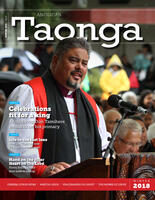










Comments
Log in or create a user account to comment.